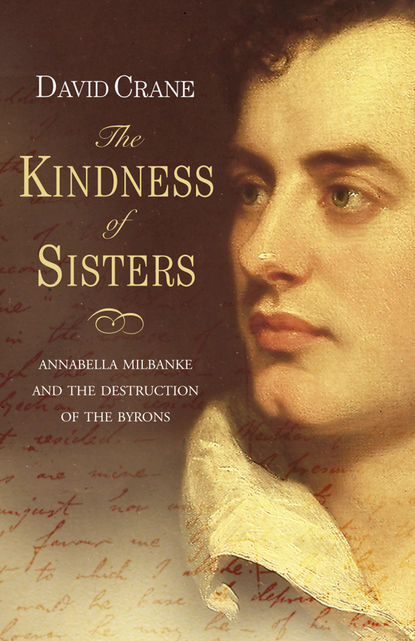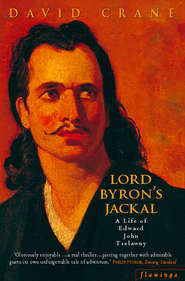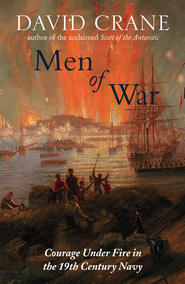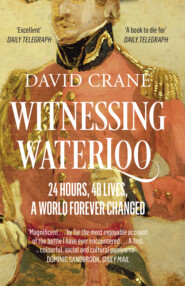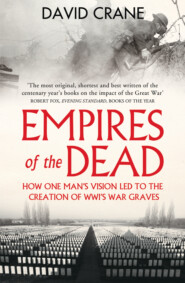По всем вопросам обращайтесь на: info@litportal.ru
(©) 2003-2024.
✖
The Kindness of Sisters: Annabella Milbanke and the Destruction of the Byrons
Настройки чтения
Размер шрифта
Высота строк
Поля
(#litres_trial_promo)
With the solitary exception of Milton, no English writer has so polarised opinion or posthumously stirred such visceral responses as Byron. In the wake of Shelley’s death off the coast at Lerici the Tory press might lash him with a cruel and casual contempt that still has the power to shock, but the entrenched battle lines that formed around Byron’s memory are of another order altogether, scars that define not just a world of coterie politics but the permanent cultural life of a whole nation.
It is notable, in fact, that it is not with other literary reputations that the posthumous cult of Byron can be compared, but with those deaths that seem to reveal some crisis of confidence or national identity. In more recent times the great state funeral of Sir Winston Churchill patently belonged to an order of its own, but if the sombre mood of that week was of an empire mourning its own passing, one only needs to think of other such funerals – Wellington’s, Nelson’s, the torch-lit procession of the old, mad George III – to recognise the context in which Byron’s needs to be seen. ‘We have been stunned from another quarter’, Sir Walter Scott wrote,
by one of those deaths … as from an archangel’s trumpet to awaken the soul of a whole people at once.
(#litres_trial_promo)
‘Hark! forth from the abyss a voice proceeds,’ Byron himself wrote of Princess Caroline – lines doubly prophetic of the mood that would greet his own death and that of another thirty-six year old aristocratic exile whose funeral cortege followed the almost identical journey northwards through the streets of London,
A long low distant murmur of dread sound,
Such as arises when a nation bleeds
With some deep and immedicable wound …
Scion of chiefs and monarchs, where art thou?
Fond hope of many nations art thou dead?
Could not the grave forget thee, and lay low
Some less majestic and less beloved head?
(#litres_trial_promo)
There was something else about Byron’s death, however, something alien and atavistic, that not even the politicised guilt and pseudo-Catholic trappings of Princess Diana’s funeral can quite match. Some years ago there was a documentary film of a Bengali village terrorised by a man-eating tiger, and in the ritual celebrations that greeted its killing, the frenzy of hands that stretched up in a bizarre mixture of fear and reverence to touch the garlanded corpse, we probably come as close as we can to the mood in which England awaited the return of Byron’s body.
For Byron was that tiger (an image he used of himself – for that matter an image his mother-in-law used of him) – Blake’s tiger, a thing of ‘fearful symmetry’, an elemental force, beyond comprehension – too dangerous to be allowed to live and too vital to live without. ‘Alas poor Byron,’ Carlyle wrote in the flush of pentecostal panic that greeted the news from Greece,
The news of his death came down on my heart like a mass of lead; and yet, the thought of it sends a painful twinge thr’ all my being, as if I had lost a brother! O God! That so many souls of mud and clay should fill up their base existence to the utmost bound, and this, the noblest spirit in Europe, should sink before half his course was run!… We shall hear his voice no more: I dreamed of seeing him and knowing him; but the curtain of everlasting night has hid him from our eyes. We shall go to him, he shall not return to us. Adieu my dear Jane. There is a blank in your heart, and a blank in mine, since this man passed away.
(#litres_trial_promo)
With his looks and glamour, his aristocratic pedigree, and the scandals that clung to his name, it is no surprise that Byron excited this attention in life, but the oddity is that death only intensified the cult of personality that surrounded him. For Jane Welsh the blank in creation his death left could have been no greater if the sun or moon had fallen from the skies, and it was as if no one could quite believe the enormity of their loss without the evidence of the body. ‘Don’t look at him, he is dangerous’
(#litres_trial_promo), a horror-struck Lady Liddell had warned her daughter, covering her eyes when she saw the exiled Byron in Rome, but in death that was just what everyone wanted to do. In Missolonghi the wretched Julius Millingen and the rest of Byron’s doctors had hacked at his corpse in a brutal parody of an autopsy, measuring his skull and weighing his brain, slapping vital organs on their scales as if the mystery of genius and personality was there to be found in his remains. In the same room, only days later, his companion and biographer, Edward Trelawny, pulled back the burial sheet to stare down on Byron’s body with a similar confidence – ‘the great mystery was solved’, he later wrote with a ruthless disregard for truth; ‘Both his feet were clubbed, and his legs withered to the knee – the form and features of an Apollo, with the feet and legs of a sylvan satyr.’
(#litres_trial_promo)
Back in England, it was little different when after almost six weeks at sea the Florida docked with his coffin just below London Bridge. While Byron’s old friend Hobhouse waited on deck for the undertakers to drain the preserving spirit off the corpse, crowds lined the banks and watched from the flotilla of small boats that bobbed around the ship, as eager to glimpse his return as they had been to watch his departure from Dover eight years earlier.
A French officer from Le Havre delivered Hobhouse a request from General Lafayette asking to see the body. Down in the hold, a boy was caught cutting a relic from Byron’s shroud. Over the next days, as the sense of loss sank in, the crowds only grew, men and women queuing in their thousands to pass the coffin as it lay in state in Great George Street, cramming the pavements and windows along the route of the funeral cortege and packing the church at Hucknall so full that there was scarcely room for the coffin.
Nor was this just the morbid excitement of a season, as the Parish Clerk’s Album at Hucknall, placed there by John Bowring more than a year after the funeral, underlines. The church was then a more modest structure than the building which Victorian improvers bequeathed to Canon Barber, but for the mass of visitors who made the pilgrimage, the intimacy of the old St Mary’s ministered to their grief in ways that Westminster Abbey or St Paul’s could never have done. ‘So should it be’, Bowring had written in the front of the album,
let o’er this grave
No monumental banners wave;
Let no word speak – no trophy tell
Aught that may break the charming spell
By which, as on the sacred ground
He kneels, the pilgrim’s heart is bound.
A still, resistless influence,
Unseen, but felt, binds up the sense;
While every whisper seems to breathe
Of the mighty dead who rests beneath.
(#litres_trial_promo)
The extravagant grief of the young Tennyson, the maudlin reflections of Mary Shelley as she watched the funeral cortege from her Kentish Town window, the lecture extemporised by Coleridge as it passed up Highgate Hill – all these quite properly belong to literary history, but skimming down the lists of names below Bowring’s poem the most striking thing as ever with Byron is the sheer breadth and cosmopolitanism of his appeal. The two names that head the album, for instance, are those of the royal Duke of Sussex and of Pietro Gamba, brother of Byron’s last Italian mistress, who visited Hucknall before sailing for Greece to die in the cause that Byron had made Europe’s. There are visitors here, too, from New Orleans and Baltimore, representatives from the Spanish Cortes and the American Congress, comedians and Grenadier guardsmen, writers, theatre managers and clergymen, school parties, ships’ crews, and – in 1832 – a John de Bracken, home from Calcutta, where eight years earlier prayers for the repose of Byron’s soul rose from a Greek chapel on the banks of the Hoogly.
After the seismic convulsion of grief that greeted Byron’s death, these quieter after-shocks recorded in the Hucknall Album might come as no surprise, but they still raise teasing questions about his place in English cultural life. Among those hundreds of visitors many might have been hard pressed to say what had brought them, and yet in a curious sense it is the presence of the ‘common man’ – the great battle cry of Diana’s funeral – rather than of Washington Irving or the Duke of Sussex that is the most intriguing aspect of the Byron cult.
For a man of Sussex’s liberal pretensions, the pilgrimage carried clear and deliberate political overtones, but precisely what kind of ‘fane’ did those hundreds of obscure admirers imagine they were visiting at Hucknall? What were parents doing, signing the visitors’ book with their daughters, paying homage at the shrine of a man who had publicly ridiculed every tie of family life? Why were army or naval officers at the tomb of a poet who took such pride in sharing Napoleon Bonaparte’s initials? What did good protestant Englishmen think they were up to, leaving messages that would not look out of place at the foot of the Bambino in Rome’s Aracoeli? What was it that brought so many clergymen to the grave of a writer the Bishop of Calcutta had labelled the ‘systematic poet of seduction, adultery and incest; the contemner of patriotism, the insulter of piety, the raker into every sink of vice and wretchedness to disgust and degrade and harden the hearts of his fellow-creatures’?
(#litres_trial_promo) What was nineteenth century England doing longing after ‘a perfected idol … as the Israelites longed for the calf in Horeb’?
(#litres_trial_promo)
The most exciting answer to these questions is that Byron had come to represent a subversive element in the national character for which the encroaching morality of the nineteenth century allowed less and less expression. In his wonderfully contrary study of the Byrons, A.L. Rowse once went so far as to claim that Byron was scarcely English at all, and if this is a characteristic overstatement, Rowse is right that the values Byron embodied have always prospered on the margins of English life rather than at its centre, a source of equal fascination and fear to a country reluctant to recognise its own complex identity.
‘Into what dangers would you lead me, Cassius’, a nervous Brutus asks in Julius Caesar,
That you would have me seek into myself
For that which is not in me?’
and the fear that accompanied Byron to the grave was the fear of what he had shown them in themselves.
(#litres_trial_promo) ‘Every high thought that was ever kindled in our breast by the muse of Byron’, Blackwood’s protested, expressing the sense of outrage and almost self-disgust that his readers came to feel as the full implications of their ‘idolatry’ were brought home to them,
every pure and lofty feeling … is up in arms against him. We look back with a mixture of wrath and scorn to the delight with which we suffered ourselves to be filled.
(#litres_trial_promo)
It is this that gives the history – and the posthumous history – of Byron its continuing importance because he raised demons that no community could afford to acknowledge or allow to live. In a wonderful sequence near the beginning of Stanley Donen’s Charade George Kennedy opens the west door of a church, strides down the aisle to where an open coffin rests between banks of candles on its bier, stares for a moment at the body, takes a pin out of his raincoat lapel, jabs it into the corpse to make sure it is dead, turns on his heel and strides out again.
There was something of that about Byron’s funeral – the mood along the Tottenham Road seemed to George Borrow like that of an execution – because for all its beauty and fascination the tiger was safer dead. There was nothing feigned in the grief and loss of the young Tennyson or Carlyle, and yet from the notorious day that his closest friends burned his memoirs in John Murray’s offices to the letters George Eliot sent Harriet Beecher Stowe, even Byron’s most passionate admirers needed to deny or suppress the truths that his life embodied. John Cam Hobhouse, that loyal ‘bulldog’, told Tom Moore in a conversation about the memoirs, that he knew more of Byron than anyone else, and much more than he should wish anyone else to know.





